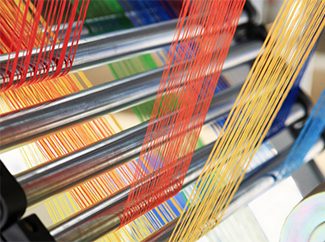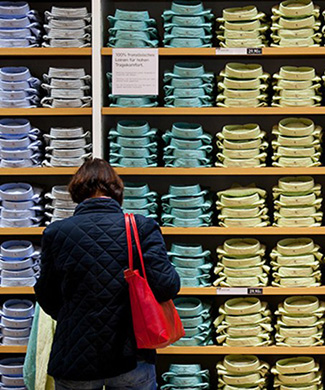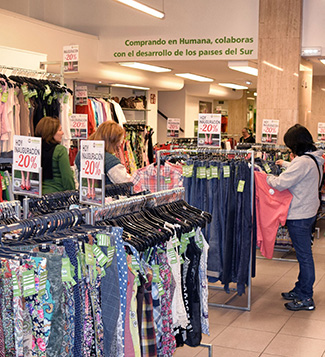consent_cookie
Duración: 1 year
Stores the user's cookie consent state
18-09-2018
The textile and footwear industry are responsible for 8% of global CO2 emissions: 6.6% would correspond to the textile sector and 1.4% to the footwear industry; If the sector's practices do not change in the short or medium term, these records will increase 49% in a decade. This is stated in the study "Measuring Fashion: Insights from the Environmental Impact of the Global Apparel and Footwear Industries study", prepared by Quantis.
Each citizen consumes an average of 11.4 kg of garments per year, which translates into 442 kg of CO2 emissions per capita, approximately the same amount that a car expels for 2,400 km.
The reuse, cornerstone to achieve a more sustainable industry
From Humana we have always warned that the textile industry and fashion are one of the most polluting activities on the planet, for two main reasons: the high level of consumption of resources and raw materials required to meet the growing production of clothing -translated in an equally expanding demand- and a high level of waste generation, pre- and post-consumption. Hence our conviction of the value of reuse as a vehicle to favor sustainable fashion and prolong the life cycle of garments.
According to the Quantis study, more than half of the impact of the textile industry on the environment comes from three main stages: in the dyeing and finishing of fabrics (where there is a more intensive use of energy), the preparation of yarn and fiber production. With global manufacturing concentrated in Asian countries, the emissions in these stages are conditioned by the high dependence on coal and natural gas to generate electricity and heat.
An alarming increase in environmental impact
"Measuring Fashion" states that "the contribution of the industry to climate change increased by 35% between 2005 and 2016, driven by changes in the materials used, consumption habits and places of production". And it foresees that, in an unchanged scenario, "the impact of the apparel industry will increase steadily in the next 15 years, reaching a projected 49% increase in the impact of climate change by 2030. Additional changes in the use of materials (from cotton to synthetics) and the increase in global consumption per capita fuels this continuous growth of the impact. "
How to reduce this impact
The textile and footwear industries must apply the following measures to significantly reduce polluting emissions:
In the scenario that the study of Quantis draws, the importance of the circular economy underlies continuously, not in vain the development of circular economic models brings with it an efficient use of resources and an extension of the life cycle of the products. The fraction of textile waste has a high reuse potential, which means a reduction in the consumption of raw materials used in the manufacture of new garments.
The fundamental role of the UN
The UN promotes relevant actions towards sustainable business models to fight against climate change and achieve the Sustainable Development Goals. For example, with the Green Fashion Week, whose seventh edition was held in May in Dubai. Another example is the UN Alliance for Sustainable Fashion or the Climate Neutral Now initiative.


